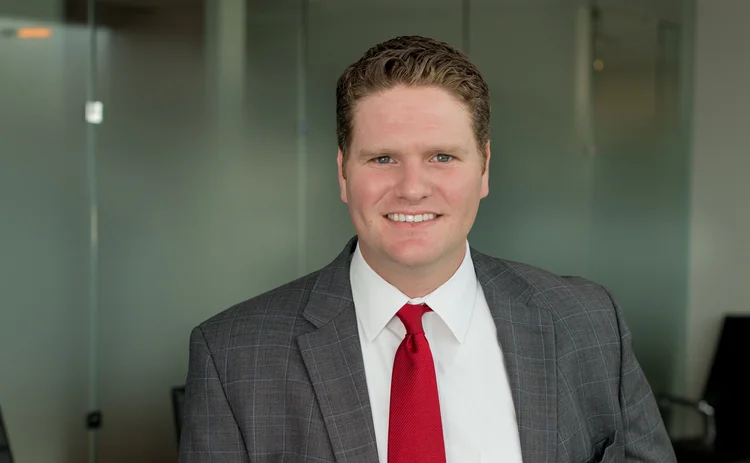
Hedging advisory of the year: Aegis Energy Risk
Energy Risk Awards 2019: Shale industry capital providers turn to hedge advisory to manage new set of risks

Last year was a landmark one for US oil producers as output rose by more than 1.5 million barrels per day to 12 million bpd, putting the US above Russia and Saudi Arabia as the world’s largest producer, according to the US Energy Information Administration (EIA).
It was also a great year for Aegis Energy Risk as it expanded its client list to more than 150 upstream oil and gas producers – an increase of 60 entities on 12 months earlier. Collectively, these firms account for production of more than 2.4 million barrels of oil equivalent per day (boe/d), or almost 9% of total US oil and gas production, which is estimated at 26.7 million boe/d.
Some 59% of the US’s 2018 oil production came from shale oil, according to the EIA. However, while production has risen, investment in the shale sector has fallen as the Street shies away from an industry that has not proved to be as profitable as predicted. Dealogic reported last year that shale firms raised only $22 billion in debt and equity, less than half of the 2016 level and the lowest number since 2007.
This environment has caused an increased demand for hedging advisory services, says Patrick McCrann, Houston-based director at Aegis Energy Risk.
Private equity firms are a major source of funding for the shale sector, but the landscape and nature of the risks they face has changed enormously in recent years. It has become increasingly challenging for private equity to step into the market for only a short time; for example, buying an exploration and production (E&P) company and selling it as soon as it has proven reserves. These days, to extract maximum value from their investments, private equity firms are having to become producers, and therefore need hedging services to manage their risk exposure and maximise profits.
Aegis has been well placed to capitalise on this secular shift in shale oil financing. In one particularly noteworthy deal, it took on the hedging requirements of a private equity firm with a portfolio of 20 oil producers. This contract made a big contribution to Aegis’s 60% growth rate for new annual recurring revenue in 2018.
Aegis, which was formed in 2013, rolled out a new technology platform called Flow in 2017, which, McCrann says, has enabled the firm to make strides in the hedging advisory space. Technology platforms are integral to commodities trading these days, but he says Flow goes one stage further than its rivals in giving clients a visual representation of the amount of production hedged, and even a look at individual trades. This functionality is now available on a mobile app as well.
The other reason Aegis has been successful is that we have a conflict-free model
Patrick McCrann, Aegis Energy Risk
The introduction of Flow in 2017 saw Aegis clinch that year’s hedge advisory award and, according to McCrann, the platform’s sophistication was also critical to the firm winning the large private equity deal in 2018, with the client cancelling an existing deal with a competitor. He says the client saw value in being able to track individual portfolio companies, and also aggregating portfolios and being able to look at overall risk across their entire portfolio.
Flow also enabled Aegis to expand its client range in 2018, both at the upper and lower end of the markets, signing deals with outfits producing less than 500 Boe/d and others up to 250,000 Boe/d. Aegis continued to invest in this platform throughout the year, upgrading and adding new functionalities such as forward price curves, document storage, improved charting, benchmarking tools and counterparty support.
With the new hedging benchmarks tools, producers can now assess their risk management approach versus other firms with a similar production profile on an aggregated and anonymised basis. Aegis says 90% of its clients participate in this programme.
Despite Aegis’s expansion in customer numbers, the firm is focused on its existing business model of pure hedge advisory, unlike some of its competitors. According to McCrann, this lack of a conflict of interest with clients is a significant advantage to winning business in the market.
“The other reason Aegis has been successful is that we have a conflict-free model,” he says. “We don’t do physical marketing, we don’t do proprietary trading, and we don’t use volumetric pricing models that encourage unnecessary trading. Everything we do is focused on enhancing our advisory services to assist our clients in protecting their cash flows,” he says.
Only users who have a paid subscription or are part of a corporate subscription are able to print or copy content.
To access these options, along with all other subscription benefits, please contact info@risk.net or view our subscription options here: http://subscriptions.risk.net/subscribe
You are currently unable to print this content. Please contact info@risk.net to find out more.
You are currently unable to copy this content. Please contact info@risk.net to find out more.
Copyright Infopro Digital Limited. All rights reserved.
As outlined in our terms and conditions, https://www.infopro-digital.com/terms-and-conditions/subscriptions/ (point 2.4), printing is limited to a single copy.
If you would like to purchase additional rights please email info@risk.net
Copyright Infopro Digital Limited. All rights reserved.
You may share this content using our article tools. As outlined in our terms and conditions, https://www.infopro-digital.com/terms-and-conditions/subscriptions/ (clause 2.4), an Authorised User may only make one copy of the materials for their own personal use. You must also comply with the restrictions in clause 2.5.
If you would like to purchase additional rights please email info@risk.net
More on Commodities
Energy Risk Commodity Rankings 2025: political upheaval adds to commodity market risk
The 2025 Commodity Rankings reveal the brokers and dealers that market players turn to in challenging times
Energy Risk Software Rankings 2025: market upheaval puts emphasis on IT systems
Quality of risk management key to performance in today’s volatile markets
Corporates keep the faith on net-zero goal
Large corporates’ energy transition includes trading and risk management in energy and commodities markets
Energy Risk Asia Awards 2024: The winners
Winning firms adapt to change with exemplary risk management skills
Foreign funds are bulls in China’s onshore commodity futures
Growing participation from overseas investors is boosting liquidity in what’s already a boom market
Energy Risk Software Rankings 2024: IT demands increase amid rising risk
Heightened geopolitical and credit risk increase requirements on commodities software
Energy Risk Asia Awards 2023: The winners
Winning firms demonstrate resilience and robust risk management amid testing times
ION Commodities: addressing the market’s recent pain points
Energy Risk Software Rankings winner’s interview: ION Commodities







